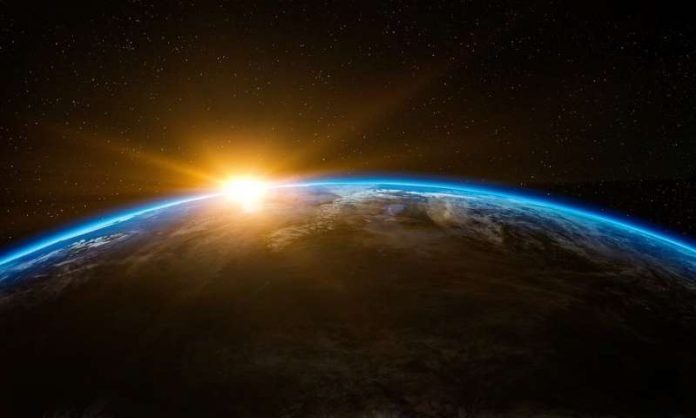
In a new study, scientists found that young stars could rapidly destroy atmospheres of potentially-habitable planets that are like Earth.
This may it very hard for the formation of life outside our solar system.
The research was conducted by researchers from the University of Vienna and the Space Research Institute of the ÖAW in Graz.
Previous research has discovered thousands of planets orbiting stars outside our solar system.
This makes people think about if there are life forming on these planets.
One important feature of a habitable planet is that it can hold onto an atmosphere. The major reason for atmospheric losses to space is the central star that the planet is orbiting.
Recent studies have focused on planets orbiting stars called M-dwarfs. They are smaller than our Sun and are the most numerous type of star in our solar neighborhood.
In the current study, the team examined for the first time how rapidly an Earth-like atmosphere would be lost from a planet orbiting a very active young star.
They found that extreme hydrodynamic losses of the atmosphere would happen, and this could lead to the entire loss of an Earth-like atmosphere in just less than one million years.
The finding provides important information for the early evolution of the Earth and for the Earth-like atmospheres forming around M-dwarfs.
So why the atmosphere on Earth was not lost?
The team explains that on Earth, the early atmosphere was dominated by carbon dioxide.
It could cool the upper atmosphere by emitting infrared radiation to space. This could protect the atmosphere from the heating by the early Sun’s high activity.
For planets orbiting M-dwarf stars, they can only form Earth-like atmospheres and surfaces after the activity levels of the stars decrease. This can take up to several billion years.
It is more likely that many of the planets orbiting M-dwarf stars have very thin or possible no atmospheres.
In both situations, life is harder to form than previously thought.
The study is published in the journal Astronomy & Astrophysics Letters.
Copyright © 2019 Knowridge Science Report. All rights reserved.



